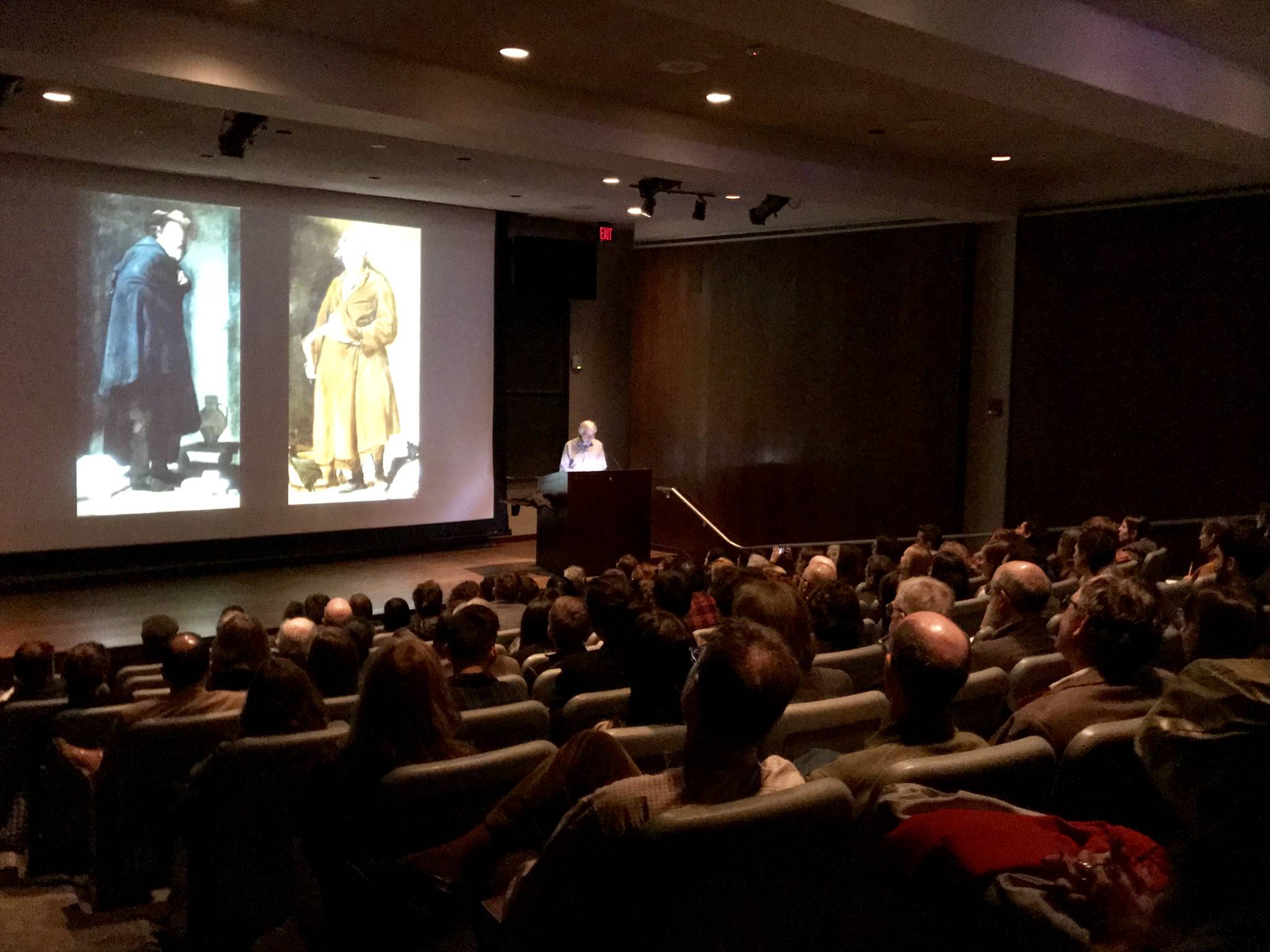On April 9, art historian T.J. Clark delivered the Eberhard L. Faber Memorial Lecture on “Velazquez, Aesop, and War.” The lecture was cosponsored by the Department of Art and Archaeology and the Department of Spanish and Portuguese.
Speaking to a full auditorium in McCormick Hall, Clark began his talk with a side-by-side comparison of Velazquez’s “Aesop” and “Mars.” Both paintings are tall and narrow and were likely painted in the 1630s; because of these similarities, some historians believe that the paintings were conceived of together and may have hung in the same room at King Philip IV’s hunting lodge, the Torre de la Parada.
Clark drew the audience’s attention to the expressions of the paintings’ subjects. “I’m not saying that [Aesop and Mars] exactly share a look, or that it’s exclusive to them, but I hope you’ll agree that their looks have a certain family resemblance,” said Clark. “It is the look of a certain kind of distance; it is a look that looks outward from the illusion it is part of, a look that doesn’t precisely puncture the illusion.”
While Clark began with the paintings’ similarities, he went on to offer two “expressions” to describe the differences in the respective subjects’ looks, suggesting that Aesop’s is one of “seeing through things” and Mars’ of “losing face.”
Of Aesop’s look, Clark remarked, “I have no words for Aesop’s expression, but that doesn’t mean that I don’t know what the expression is about. On the contrary, the wordlessness of what Aesop is intending makes his intention all the clearer.”
He added, “I think I know what Aesop has on his mind, I understand the quality of his distance…he is assessing, not addressing. I know, that is, what keeps Aesop’s words and our words at bay, and isn’t this the character of expressions in general? All expressions, but especially ones like this, are about where words fail us in our doings with the world.”
The expression of Velazquez’s Aesop, Clark suggested, is surely the key to his tone. “We see his look, and hear his voice: the voice of the fables, that special, humble, clever, devastated simplicity,” Clark said.
If Aesop’s expression conveys the voice of the fables, or “seeing through” things, Clark invited the audience to consider what the look of Velazquez’s Mars conveys, particularly in light of the fact that “during all 44 years of Philip IV’s reign, there was not a single day of peace, and most of the wars Spain fought were far from triumphs.”
What it would have meant to a court society — a gathering of warriors — to have the god of battles look at them in this way, as someone who has “lost face”?
Particularly when juxtaposed with Velazquez’s assessing “Aesop,” as it likely was in the Torre de la Parada, Clark proposed that Velazquez’s Mars, disrobed and unmanned, may have been making an Aesopian statement; perhaps Mars’ “look of war” is also a means of conveying what cannot be articulated: “war and buffoonery are one.”
Clark is the George C. and Helen N. Pardee Chair Emeritus at the University of California, Berkeley. He currently lives in London.
By Julie Clack
















